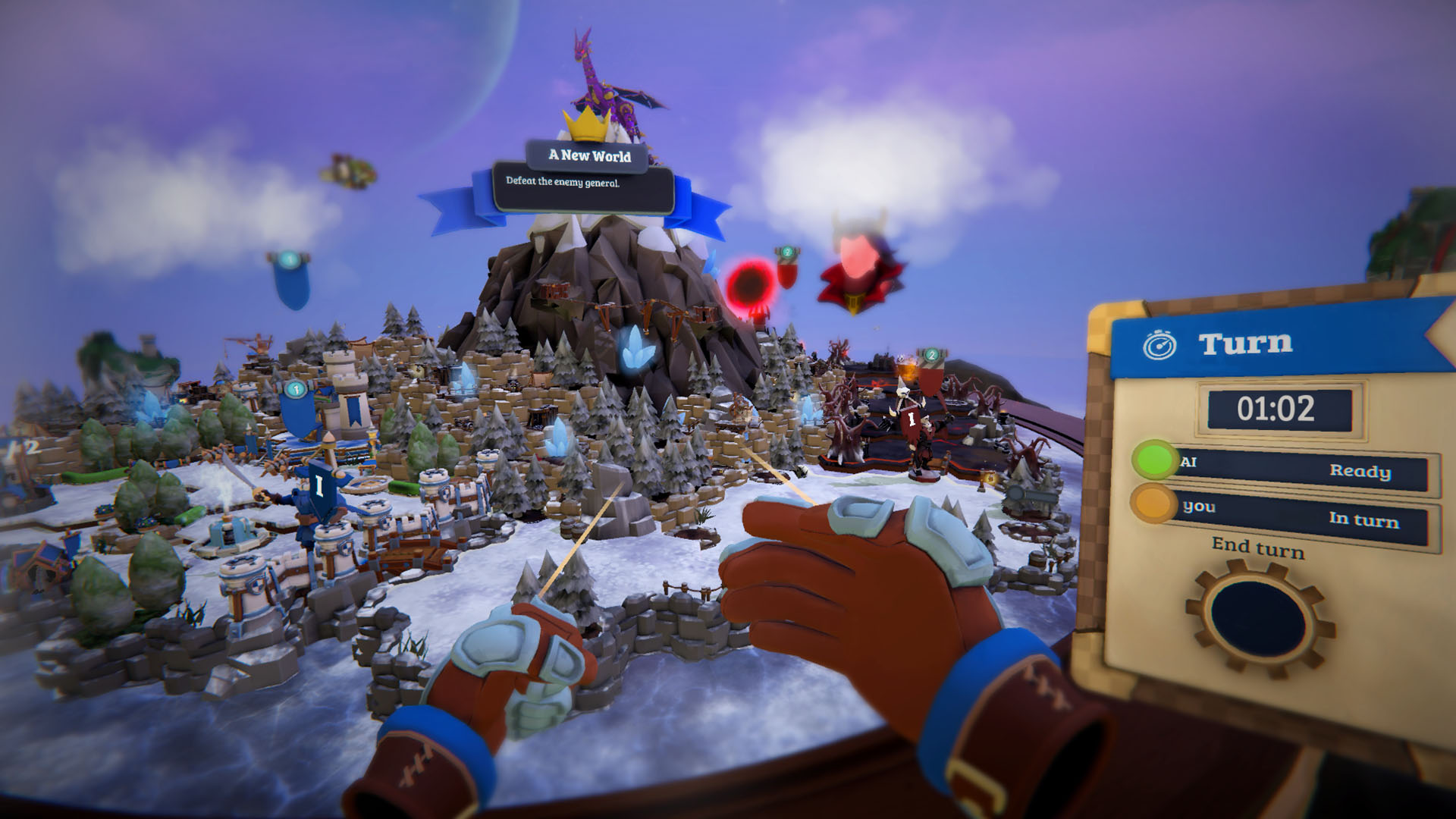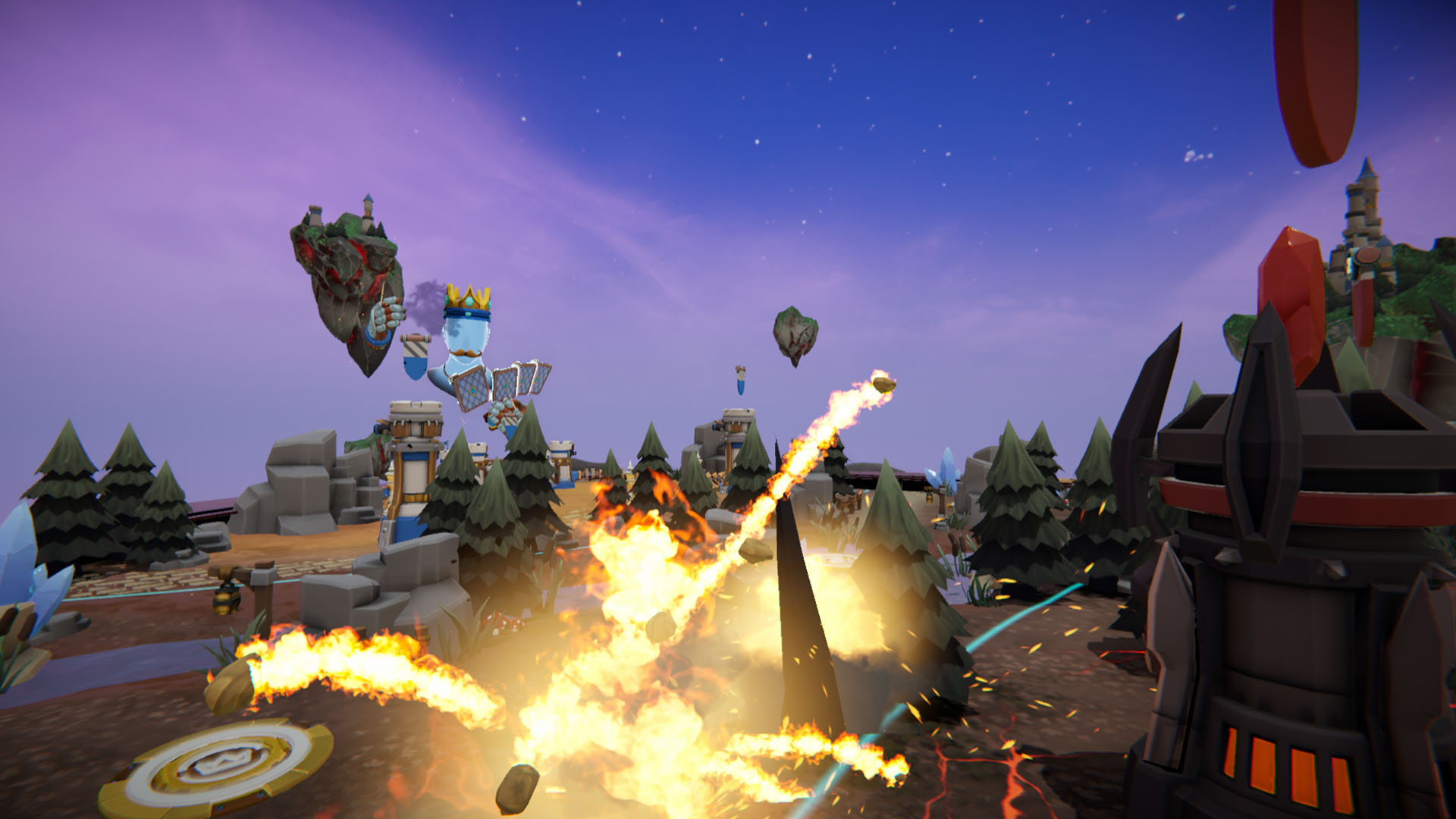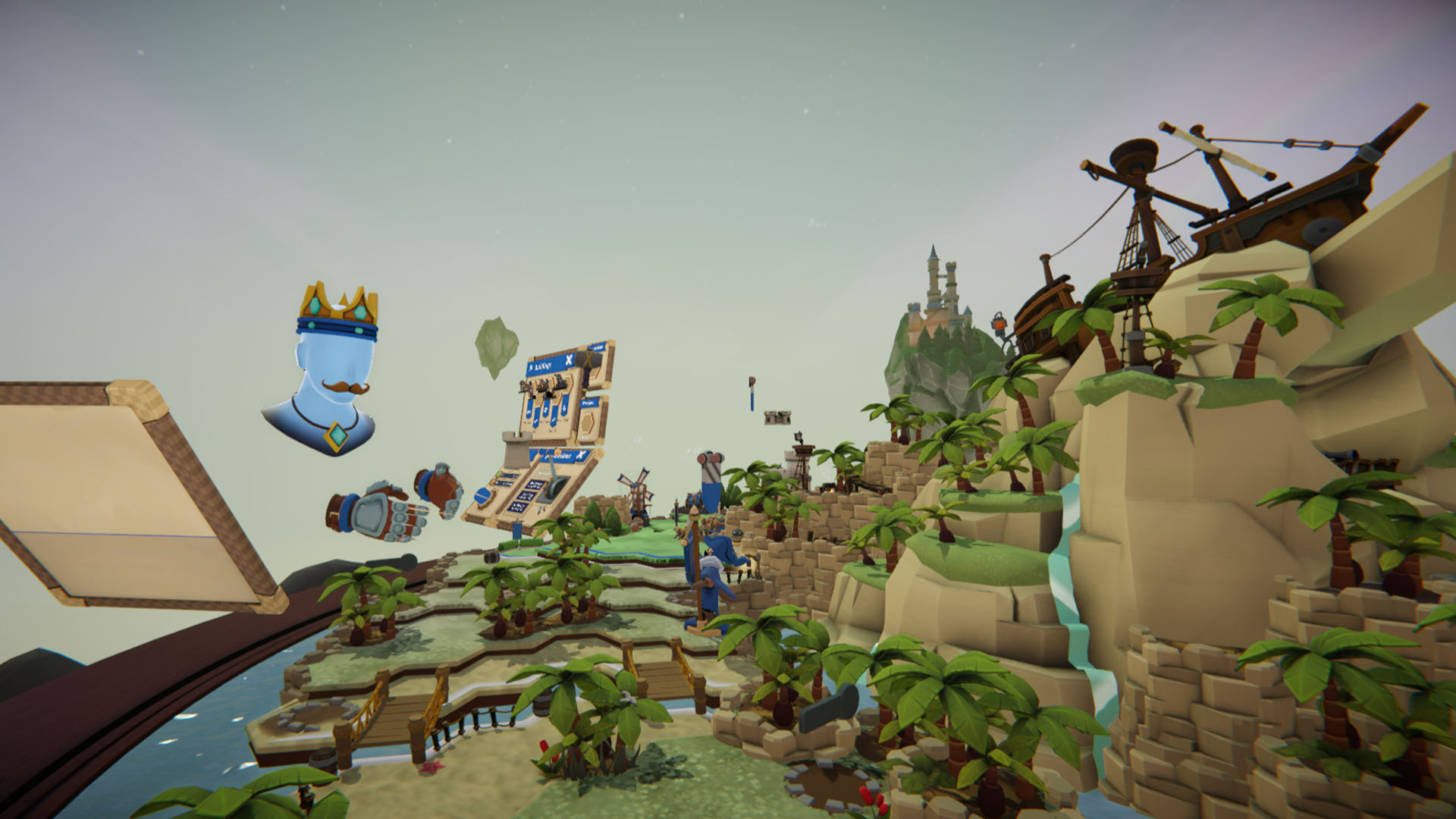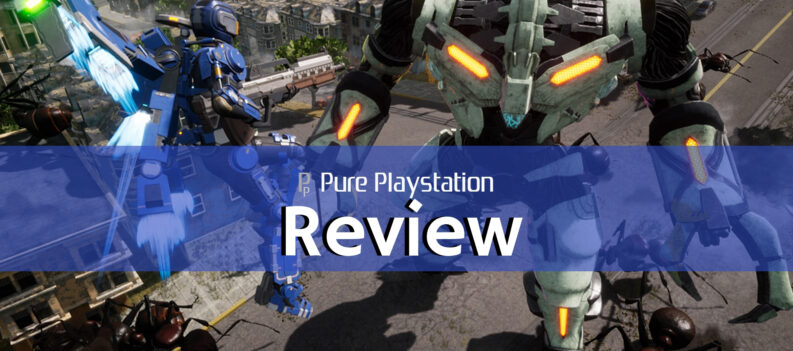Vertigo Games, the developers of one of my favorite VR games, zombie shooter Arizona Sunshine, brings us Skyworld. Ironically enough, if a first-person shooter zombie game has a polar opposite, it would probably be Skyworld. Gone are the flesh-eaters, pithy one-liners, and grisly headshots, replaced with cartoony floating worlds to conquer on your very own rotating table top. Skyworld is a fantasy table-top style war game that focuses on both real-time strategy and turn-based action. But does it bring the goods to the table, or is this a video game stew you’ll want to miss?
This is pretty much a straight port of the PC VR version of the game, so if you’ve played that, you know what you’re getting into. If you’re new here, you’re going to need the PSVR headset, and either a Dualshock 4 or a pair of Move controllers. I highly recommend the Move controllers. As you begin the game, you can choose to dip into the fairly meaty campaign, get straight to the point in a Skirmish Mode, or face off against a peer in the Multiplayer Mode. If you’re new to the game, I suggest the campaign, as it serves as a tutorial. I was completely lost and leaned heavily on the tutorial for the first hour or so. Thankfully, once the game’s trusty narrator explained everything, and you have a chance to play around with the different mechanics, it all starts to click.
You play as a king who wants to bring peace and prosperity to the eight worlds (levels) of Skyworld. Each of these levels/worlds is displayed on a giant round table that you can spin or pull closer to get the best view possible. These maps are broken into sections and the idea is to build an army and expand your kingdom into the as many sections as you can. Of course, you aren’t the only one who wants to rule. In this case, it’s a pack of demons. You’ll need to build stone quarries, iron mines, mills and so on if you want your kingdom to thrive. Adding these structures to the land, along with the changing seasons and the birds that fly through the sky, brings a real sense of wonder that I can imagine old school table-top gamers would find pretty damn cool. In fact, if you lean in, you can see these tiny factories working and even hear the workers whistling as they grind away.

Speaking of workers, wood, food, stones, magic, and iron don’t make themselves, so you’ll need plenty of loyal constituents. Keep taxes low and food rations high and you’ll slowly build a decent workforce. Raise the taxes too much, however, and be prepared to get abandoned. Managing the kingdom’s resources changes slightly during the various levels, but with no time limit set to each turn, it’s a mostly forgiving mechanic. It’s not the most complex resource manager around, but it’s addictively fun, and the best one yet in virtual reality.
Once the battle begins, the pace of the game changes completely. In your left hand, you have a deck of cards. You pick a card with your right hand and place it on the board, tilting your hand to choose the direction your army will advance. Each card represents a branch of your army. You have a batch of sword-wielding soldiers or your basic group of archers. You can step it up and send a giant knight, a battering ram, or even a catapult. You can also choose a fire card that lets you rain down a fireball on your poor opponent. This is the only damage you personally cause, as each unit you dispatch generally follows the path you lead them on, but fights on their own.

The cards regenerate in your hand, and you basically are placing them as fast as you can in an attempt to overwhelm the evil demon on the other side of the table. In the middle of the map, there are three checkpoints, and whoever controls them controls that checkpoint’s giant floating cannon. These cannons are always firing on the towers and the castle, so controlling them means they are blasting away at the bad guys and not you.
These battles can get a bit hectic and don’t always feel overly strategic, but managing your cards before the battles are where most of the strategy comes in. You pick the cards, upgrade them, control the order they regenerate and so forth. In other words, a lot of the battle strategy comes before the troop’s feet hit the battlefield.
As I said, the campaign is eight levels and you can expect eight to ten hours at least to finish it. And that’s on the normal setting. There is also an easy mode and a hard setting if you like it rough, and I know some of you do.

The skirmish mode lets you pick the map and setting and gets straight down to business, while the multiplayer mode lets you play against a human foe. In this mode, the resource portion of the game now has a time limit so you aren’t left waiting for an indecisive jackwagon to decide between taxing six gold coins or twelve.
Skyworld isn’t the most in-depth and robust RTS game out there but it’s resource management, simple but charming graphical style and addictive gameplay left me wanting more. Vertigo Games knows their way around the virtual reality landscape, and it really shows with Skyworld. It’s polish is noticeable from the title screen to the final credits. Hardcore Real Time Strategy fans may be left wanting, but for me, it gave me just enough to keep me coming back to the kingdom.
Skyworld VR PSVR Review
-
Overall - Fantastic - 8/108/10
Summary

A somewhat simple fantasy table-top game brought to life in virtual reality. I’ve never played a real table-top strategy game before, but seeing this world unfold in VR might be my new game addiction. It’s clearly not for everyone, but if it piques your interest at all, I think you’ll find it worth your money and your time.
Review Disclaimer: This review was carried out using a copy of the game that was provided by the publisher. For more information, please read our Review Policy.
Reviewed using base PS4.















